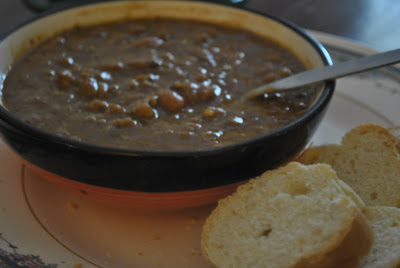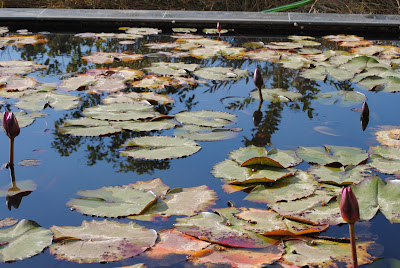I rarely post recipes of Indian sweets and savouries because they seem so subjective to me. A lot of Indian sweet making is about perserverence and picking up a few tips rather than sticking to recipes to the letter, as in case of many Western recipes. The success to making Indian sweets lies in not getting caught up in the debate about one string or two string consistency but rather to get a natural feel of things by making them again and again. Even if only once a year - the next year will be a bit better than the previous one because of one more thing you found out for yourself.
This year since I'm home and have the time (but alas not the energy and so have had my trusty Tara to help out with the actual stirring/making/squuezing out), I decided to involve my 6 year old so that she gets a feel of all the traditional Tamil sweets and savories which she wouldn't get to see otherwise in Delhi. I also decided to post the recipes with a few tips of what I have learnt over the last 12 years I have been making these on and off. I don't profess to be an expert but just making these again and again is what seems to have helped me in getting things right.
I will be posting these dishes and their recipes over the next 5 days - hopefully, those of you who need a slight nudge will find these posts helpful to kickstart your Diwali preparations. While store bought is always convenient and time saving, it would be a little sad if we didn't make an effort to preserve just a few of our traditions!
This post introduces the favourite Tamil savoury Thenkuzhal - literally meaning tubes of honey - and Mullu Murukku. These are fried savoruy snacks with a lovely crunch to them - made out of rice flour and split green gram lentil flour. The proportions and ingredients are what my Mom uses - haven't changed anything since it all works perfectly fine as it is. And please Use Butter.
Thenkuzhal

2 cups - rice flour
1/2 cup - urad dal (split black gram) flour
Butter - 5 tbsp (I used unsalted butter, if you use salted butter, check the quantity of salt)
Cumin seeds - 1.5 tsp
Asafoetida - 1/4 tsp
Salt - 1level tsp (approximately)
Water - I ended up using about 250ml of water totally, but added it very gradually so as to not end up with a sticky mass.
1. You could buy urad dal flour readymade from the store - but if you don't get it (which I don't here), lightly roast 1 cup of split black gram till it barely changes colour (this takes about 8-10 minutes). If you roast it too much, you might not get the almost cream colour of this particular svaoury snack and it might turn out a bit darker. Which is fine - you can always keep it in mind and do it the next year!
2. Mix the rice flour, urad dal flour, cumin seeds and asafoetida in a large bowl. Melt the butter till just liquid and then mix into the flour gradually. Add the salt - its always better to add a little less and then increase it after tasting the dough. Mix till all the ingredients come together.
3. The dough may just about be able to come together but not able to hold shape. Start adding the water a little at a time and knead into a soft, pliable dough. At this stage, you can leave it a little bit firmer than what is actually needed and then add some more water to each batch just before being pressed out.
4. Divide the dough into 4-5 portions, each just enough amount to fit into the murukku press. Keep the rest aside covered by a damp cloth so that it doesn't dry out and work with one portion at a time.
5. Grease insides of the mould. Take one portion of the dough and add about a tbsp of water (if needed), put into the murukku press. Use the plate which has plain holes in it.
6. Press down on a oiled quarter plate or even a greased plastic sheet - it should be easy to press out and the shapes should form easily. If you are finding it difficult to press out the dough, then remove the portion and add one or two tbsp of water to it and try again till you come to a stage where it becomes easy to press out the thenkuzhal shapes. It doesn't matter if the shapes don't come out into an exact round shape - as you keep pressing it will become easier to control.
7. Meanwhile, heat oil in a heavy bottomed kadhai/wok - test the temperature by putting a small bit of pressed dough into the oil, it should rise to the top. If not wait for some more time. Keep the flame on medium low at all times. A high flame will cause the thenkuzhal to brown fast without cooking inside.
8. When the oil is hot enough, slide the pressed out shapes from the plate/plastic sheet onto your hand and then slide it slowly into the hot oil, taking care not to drop it from a height,else the oil might splash on to your hands. Put in a few more or as much as the pan can accomodate without overcrowding.
9. When it rises to the top, flip over and fry for a few more minutes - till the bubbling of the oil stops and the thenkuzhal is cooked through. Its fine if it feels a little soft inside, it will harden a bit as it cools. Wait for the first batch to cool and eat one to check the salt and consistency. Accordingly adjust the seasoning if needed and correct the frying time for the next batch.
10. Press out the remaining portions as well in the same manner. (and keep getting better and better at it each time!)
Mullu Murukku
This uses the same dough as the thenkuzhal but I just add ajwain seeds (omam) to the flour and you need to change the disc press to the star shaped one.
2 cups - rice flour
1/2 cup - urad dal (split black gram) flour
Butter - 5 tbsp (I used unsalted butter, if you use salted butter, check the quantity of salt)
Cumin seeds - 1.5 tsp
Asafoetida - 1/4 tsp (
hing)
Ajwain seeds - 1 tsp (
omam/bishops weed)
Salt - 1level tsp (approximately)
Water - I ended up using about 280ml of water totally, but added it very gradually so as to not end up with a sticky mass.
1. You could buy urad dal flour readymade from the store - but if you don't get it (which I don't here), lightly roast 1 cup of split black gram till it barely changes colour (this takes about 8-10 minutes). If you roast it too much, you might not get the almost cream colour of this particular svaoury snack and it might turn out a bit darker. Which is fine - you can always keep it in mind and do it the next year!
2. Mix the rice flour, urad dal flour, cumin seeds and asafoetida in a large bowl. Melt the butter till just liquid and then mix into the flour gradually. Add the salt - its always better to add a little less and then increase it after tasting the dough. Mix till all the ingredients come together.
3. The dough may just about be able to come together but not able to hold shape. Start adding the water a little at a time and knead into a soft, pliable dough. At this stage, you can leave it a little bit firmer than what is actually needed and then add some more water to each batch just before being pressed out.
4. Divide the dough into 4-5 portions, each just enough amount to fit into the murukku press. Keep the rest aside covered by a damp cloth so that it doesn't dry out and work with one portion at a time.
5. Grease the insides of the mould. Take one portion of the dough and add about a tbsp of water (if needed), put into the murukku press. Use the plate which has a star shaped hole in it.
6. Press down on a oiled quarter plate or even a greased plastic sheet and make a spiral shape - it should be easy to press out and the shapes should form easily. If you are finding it difficult to press out the dough, then remove the portion and add one or two tbsp of water to it and try again till you come to a stage where it becomes easy to press out the spiral shapes. As you press it will become easier to control and make the spiral shape needed for this murukku.
7. Meanwhile, heat oil in a heavy bottomed kadhai/wok - test the temperature by putting a small bit of pressed dough into the oil, it should rise to the top. If not wait for some more time. Keep the flame on medium low at all times. A high flame will cause the murukku to brown fast without cooking inside.
8. When the oil is hot enough, slide the pressed out shapes from the plate/plastic sheet onto your hand and then slide it slowly into the hot oil, taking care not to drop it from a height,else the oil might splash on to your hands. Put in a few more or as much as the pan can accomodate without overcrowding.
9. When it rises to the top, flip over and fry for a few more minutes - till the bubbling of the oil stops and the murukku is cooked through.Wait for the first batch to cool and eat one to check the salt and consistency. Accordingly adjust the seasoning if needed and correct the frying time for the next batch.
10. Press out the remaining portions as well in the same manner till all the dough is used up.





































